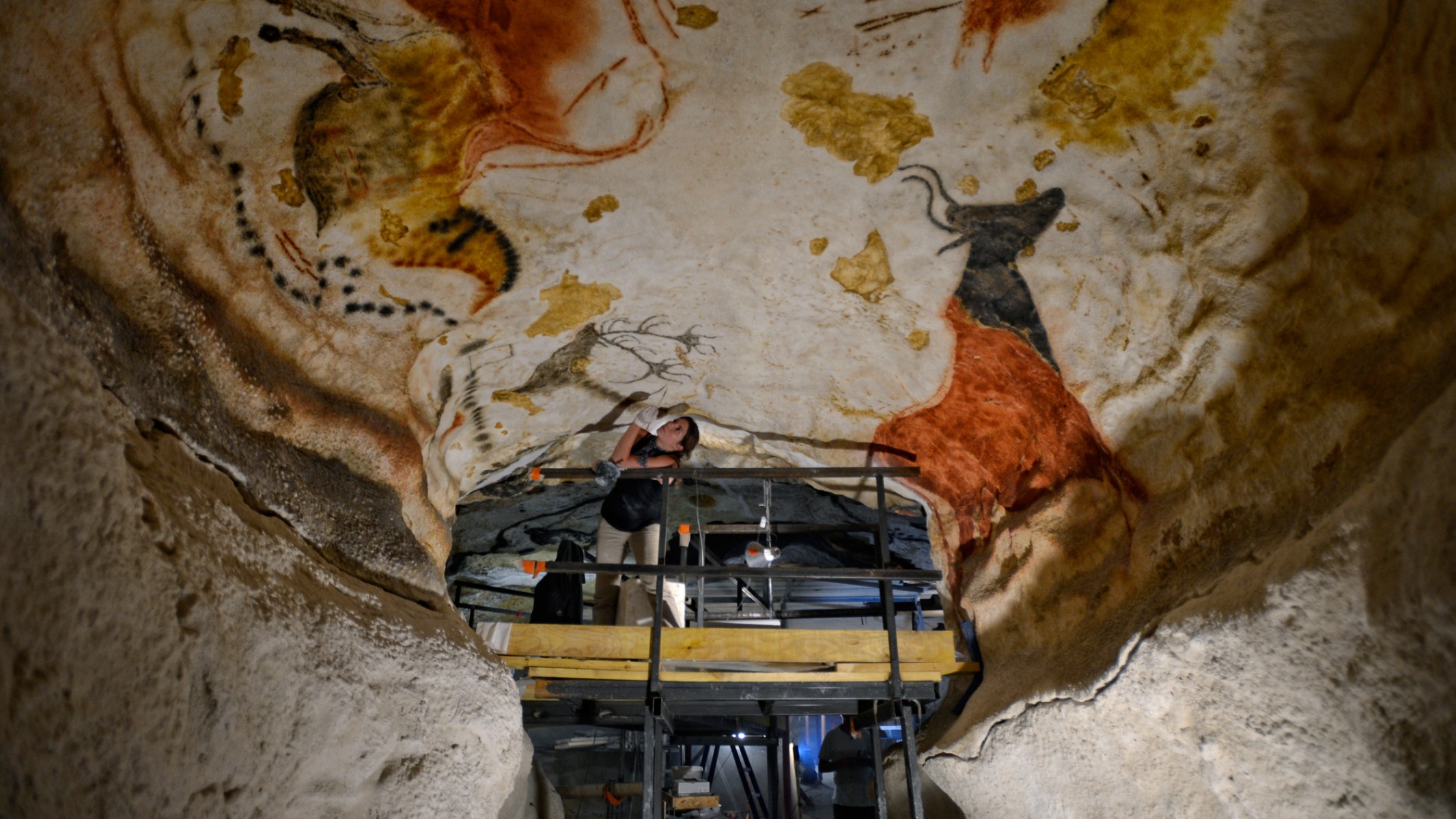The cave of Lascaux, located in Dordogne, France, is a renowned archaeological site that has yielded a wealth of cave and Paleolithic art. Discovered in 1940, the cave paintings found within its depths provide a captivating glimpse into the lives and artistic expressions of our ancient ancestors.

The art in Lascaux is dated to the Magdalenian period, believed to be around 17,000 or 18,600 years ago. This estimation was made through the analysis of a rod of reindeer antler found in the cave, which served as a valuable tool for dating the artwork.
The cave paintings at Lascaux are celebrated for their exceptional quality and artistic sophistication. The compositions depict a wide range of subjects, including animals such as horses, deer, bulls, and a variety of other fauna. The attention to detail, use of color, and mastery of form exhibited in these paintings showcase the remarkable talent and ingenuity of our Paleolithic ancestors.

The significance of the Lascaux cave art extends beyond its aesthetic appeal. It provides valuable insights into the daily lives, beliefs, and cultural practices of our ancient predecessors. The paintings are believed to have had ritualistic and symbolic purposes, potentially serving as a means of communication, storytelling, or even magical rituals associated with hunting.
The preservation and study of the Lascaux cave art present unique challenges. Due to the delicate nature of the paintings, access to the original cave is restricted to protect the artwork from environmental damage. However, replicas of the cave, known as Lascaux II and Lascaux IV, have been created, allowing visitors to experience the magnificence of the art while safeguarding the fragile originals.

The cave of Lascaux is recognized as a UNESCO World Heritage site, attesting to its global significance and the need for its preservation. Its discovery has revolutionized our understanding of prehistoric art and the capabilities of early human societies.
The cave paintings of Lascaux continue to captivate and inspire, offering a tangible connection to our ancient past. They serve as a testament to the universal human impulse for artistic expression and the enduring power of visual storytelling across millennia.